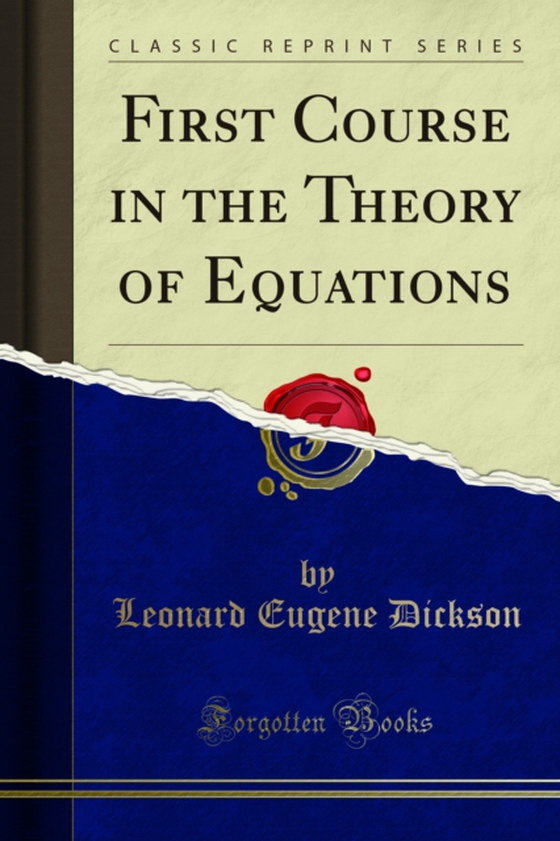
First Course in the Theory of Equations e-bog
68,60 DKK
(inkl. moms 85,75 DKK)
Whilst the greatest effort has been made to ensure the quality of this text, due to the historical nature of this content, in some rare cases there may be minor issues with legibility. It was to meet the numerous needs of the student in regard to his earlier and future mathematical courses that the present book was planned with great care and after wide consultation. It. Din'ers essentially fro...
E-bog
68,60 DKK
Forlag
Forgotten Books
Udgivet
27 november 2019
Genrer
PBF
Sprog
English
Format
pdf
Beskyttelse
LCP
ISBN
9780243847020
Whilst the greatest effort has been made to ensure the quality of this text, due to the historical nature of this content, in some rare cases there may be minor issues with legibility. It was to meet the numerous needs of the student in regard to his earlier and future mathematical courses that the present book was planned with great care and after wide consultation. It. Din'ers essentially from the author's Elementary Theory of Equations, both in regard to omissions and additions, and since it is addressed to younger students and may be used parallel with a course in differential calculus. Simpler and more detailed proofs are now employed. The exercises are simpler, more numerous, of greater variety and involve more practical applications. This book throws important light on various elementary topics. For example, an alert. Student of geometry who has learned how to bisect auv angle is apt to ask if every angle can be trisected with ruler and compasses and if not, why not. After learning how to construct regular polygons of 3, 4, 5, 6, 8 and 10 sides, he will be inquisitive about the missing ones of 7 and 9 sides. The teacher will be in a comfortable position if he knows the facts and what. Is involved in the simplest discussion to date of these questions, as given in Chapter III. Other chapters throw needed light on various topics of algebra. In particular, the theory of graphs is presented in Chapter V in a more scientific and practical manner than was possible in algebra and analytic geometry.
 Dansk
Dansk

